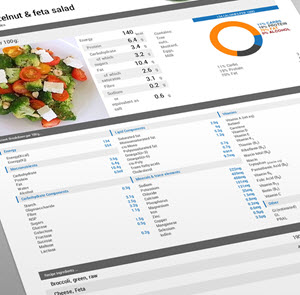Ask the DayMark Expert: What is the best system to use for developing menus and gathering nutritional data?
Posted on 17th May 2018

When it comes to systems that help prepare menus and provide nutritional data, you have many factors to consider and many options to select from. Our expert, Jill Carte, Category Manager of Kitchen Automation, answers this question in today’s post.
Industry. The first thing we need to know is what industry you are in, such as sports, health care, food service, convenience store, education, etc. Additionally, if you are a registered dietitian (RD) or work in a commercial kitchen, you will want to select a more comprehensive program that can quickly provide food recipe assessments such as the number of calories, fiber, sodium, and vitamins in a recipe, as well as other pertinent nutritional information. Those working in a commercial kitchen or as a food retailer will want to look for a system that has food-labeling capabilities.
Costs. The good news here is that some menu management systems are free. The bad news is that these systems typically provide very limited, possibly inaccurate data, and may not be that easy to work with.
One free option is to access the US Department of Agriculture’s web site. It provides a very good database but it can take some time to figure out how to navigate it and find what you are looking for.
In most cases, it is best to select a system that does most of the legwork for you. You want one that is reliable, stays up-to-date on nutritional data (this usually means it is cloud-based), can quickly analyze nutrients in a recipe, and if you work in a hotel, restaurant, or convenience store, includes a cost analysis system that calculates per-portion costs, profit margins, and other financial considerations.
Computer. At this time, most of the menu management systems are designed to work on a Windows PC, but there are some for the Mac.
Data. We have already discussed two types of data you will most likely want from the menu management system you select: recipe analysis (calories, nutrients, allergens, etc.) and, depending on your needs, per-portion costs. However, you may also want to select a system that:
- Offers meal and menu planning and creation
- Helps standardize serving portions
- Helps reduce food waste
- Manages food compliance issues and regulations
- Has an extensive food database to make meal preparation faster and easier
You may have other needs as well. What’s important to know is that some systems only provide certain information. You should select a system that provides a wide range of data to meet a number of different needs.
Cloud-based. Finally, it is highly recommended that you select a system that is cloud-based. With such systems, compliance rules can be updated in real time so you are always meeting compliance regulations. This also allows you to access nutritional information on any computer, wherever and whenever you need it.
For more information on menu management systems and recipe programs to promote health, contact a DayMark Safety Systems representative .


